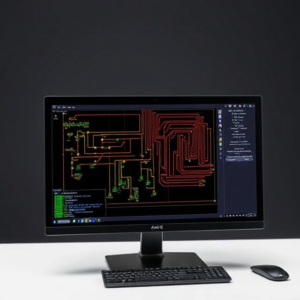Circuit simulation software is a tool that lets you design and test electronic circuits without physically building them. It allows engineers, students, and hobbyists to create virtual versions of circuits and see how they work, or how they might fail, in a computer environment.

1. Designing Circuits:
- You start by designing a circuit on the software. You can add components like resistors, capacitors, transistors, diodes, and more.
- You connect them using wires, just like you would in a real circuit.
2. Simulation:
- Once you have your circuit, the software can simulate how it will behave when powered on.
- It can show things like:
- How current flows through the circuit
- Voltage at different points
- The effect of changing component values (like increasing a resistor’s value)
- Any errors or issues that might arise, like short circuits or excessive heat.
3. Testing Without Real Components:
- The big advantage is that you can test and tweak your circuit without needing to physically build it. This is especially useful for testing complex or potentially dangerous circuits.
- You can also see how your circuit will perform under different conditions, such as changes in temperature or voltage.
4. Types of Simulations:
- Analog simulation: This deals with circuits where signals change continuously, like audio or radio signals.
- Digital simulation: This simulates circuits like microcontrollers or logic gates, which work with binary signals (0s and 1s).
- Mixed-signal simulation: This combines both analog and digital elements in a single circuit.
5. Common Software:
Some popular circuit simulation tools include:
- LTspice: A free tool for analog circuits.
- Proteus: Often used for both analog and digital simulations, including microcontroller designs.
- TINA-TI: A tool by Texas Instruments for circuit simulation and analysis.
Why It’s Useful:
- Saves time and money: You can test ideas before committing to building a physical prototype.
- Education: It’s a great way for students to learn about electronics without needing to physically build every circuit.
- Troubleshooting: If something’s not working in a physical circuit, simulating the design can help you pinpoint problems.
In short, circuit simulation software is a powerful, cost-effective way to design and test electronic circuits before going to the trouble of building them in real life. It’s like a virtual laboratory for electronics.
⬅️ Previous Post:
Circuit simulation tools :Explained
Circuit simulation tools :Explained








